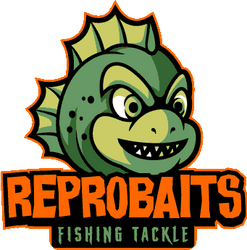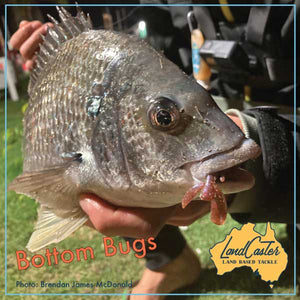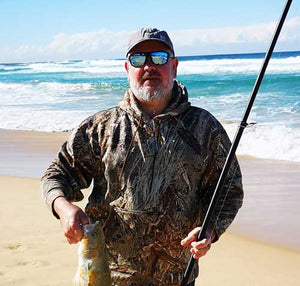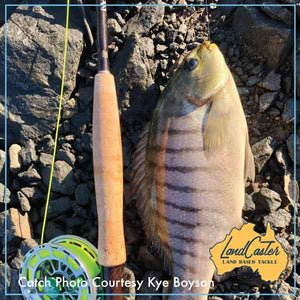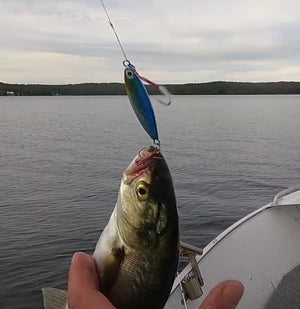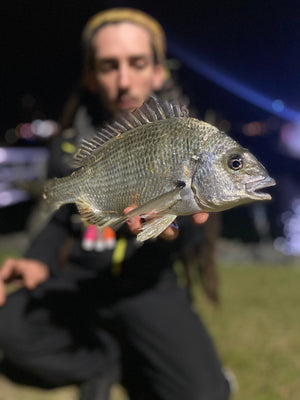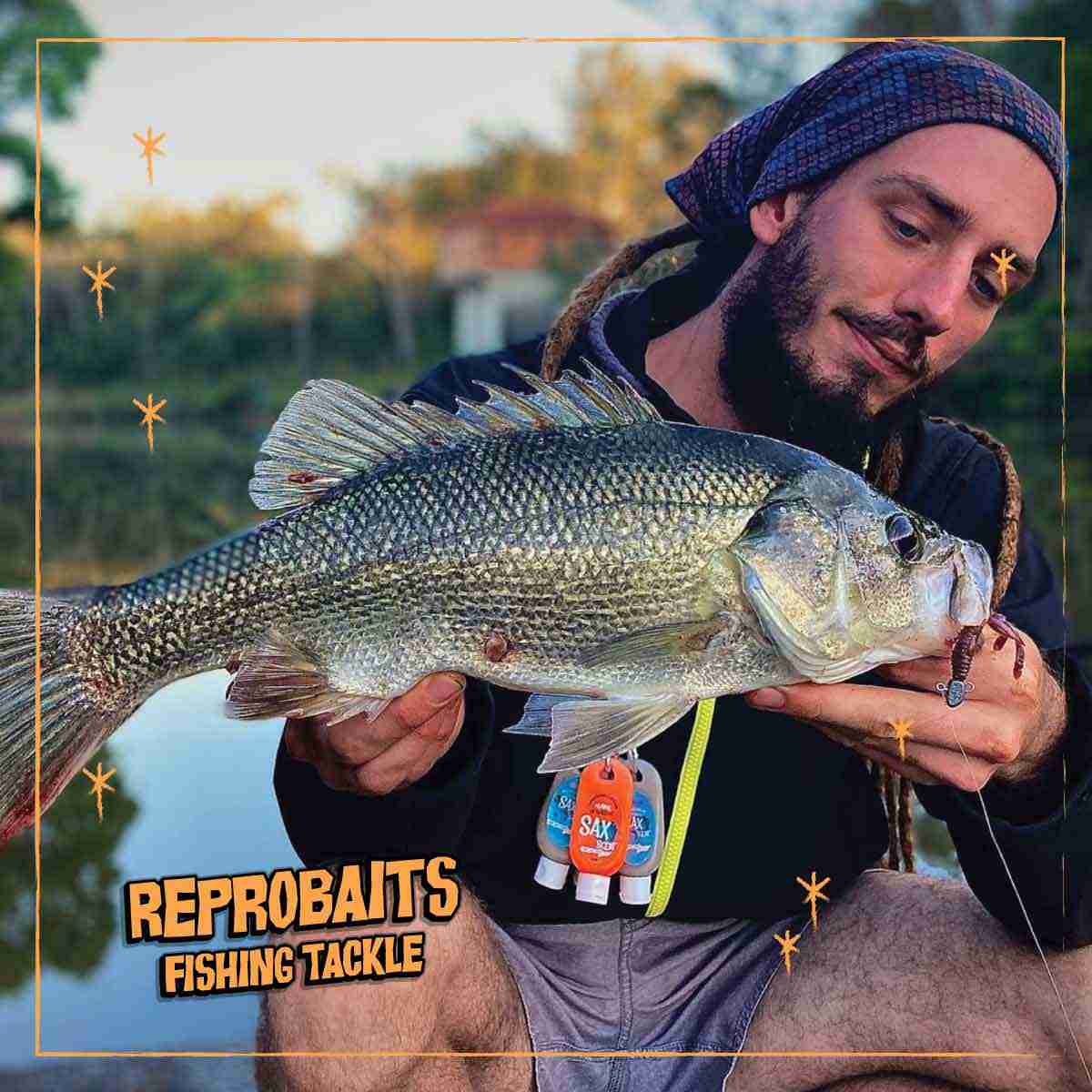
How to Catch Australian Bass
Australian Bass (Macquaria novemaculeata) is a highly prized fish species among Australian anglers. Pound for pound they are one of the best sports fish on the planet. It's also very exciting when using surface lures to see them strike and take the lure. Keep reading to find out how to catch Australian Bass by thinking like one
/wp:paragraph wp:paragraphAustralian Bass are native to the eastern states of Australia and are known for their strong fighting spirit and elusive nature. These fish are mostly found in slow-moving streams and rivers and prefer to spend most of their time in deep pools and under cover. They are primarily predatory and feed on smaller fish, insects, and crustaceans.
/wp:paragraph wp:paragraphThere have been stocking programs and we are seeing increased Bass locally making them more widely available in rivers, lakes, and estuaries. Many anglers have great success from the shore along small impoundments and rivers.
/wp:paragraph wp:heading {"level":3}The Best Baits and Lures to Catch Bass
/wp:heading wp:paragraphSoft plastics and lures are a great option for catching Australian Bass. Soft plastics that imitate crab and yabbies, grub and worm, and baitfish imitations work well to catch Austrralian Bass. Small soft plastics like the Bottom Bug and the Sea Bug work like a treat when fished around cover. Rig them with a small 1/8 ounce jig head or a small sliding ball sinker rig. Rig the worm hook weedless for getting tight to cover.
/wp:paragraph wp:heading {"level":3}Best Time of the Day to Catch Australian Bass
/wp:heading wp:paragraphFeeding patterns of Australian Bass are influenced by several factors including water temperature, light, and the presence of food. Understanding these patterns is important in determining the best time of day to catch them. pay attention to patterns for better overall fishing (this is true with any fish species you target). Whether you are a seasoned angler or just starting out the timing of your fishing trip can affect your chances of landing one of these amazing fish.
/wp:paragraph wp:paragraphAustralian Bass can be caught throughout the year but they are more active during the summer and autumn months. While Australian Bass are generally more active between dawn and dusk they will often seek shelter deep within structure during the day. Often deeper structure is harder to target without a boat but it is worth exploring especially if they are slow biting in their normal morning or afternoon spots.
/wp:paragraph wp:heading {"level":3}The Importance of Location
/wp:heading wp:paragraphIn addition to the time of day, the location you choose to fish also plays a crucial role in your chances of catching Australian Bass. Look for areas with plenty of cover and structure, such as fallen trees, rocks, and deep pools. These areas are more likely to hold fish, and the cover and structure provide shelter and a source of food.
/wp:paragraph wp:paragraphEddies, often called back eddies, are an area worth targeting. Most predatory fish will use eddies to hunt prey. Water current is often slower than the main channel and food collects there naturally. Bends in a river often have eddies that are worth exploring. Tidal eddies will change with the tide but they are a great place to try and often hold fish.
/wp:paragraph wp:heading {"level":3}Fishing Rig Setup
/wp:heading wp:paragraphFishing for Bass requires finesse and accurate casting to structure. Bass, like many other fish hang inthe water column close to structure where they feel safe and where they can feed. Therefore, the best option is an ultralight fishing combo. A 1-3 or 2-4 kilo graphite spin rod, around 7 feet in length, is ideal, coupled with a 1000, 2000, or 2500-size reel spooled with 4-8-pound line and one rod length of 4-8-pound fluorocarbon leader.
/wp:paragraph wp:paragraphFor bait fishing a 2-4 kilo rod around 7 feet in length with a 2500-size reel and a float or small running sinker to a swivel and 6 lb leader is how to catch bass.
/wp:paragraph wp:heading {"level":3}Factors that Influence Bass Feeding Patterns
/wp:heading wp:list {"ordered":true}- Water Temperature: Australian Bass are cold-blooded creatures and their metabolism is directly linked to the water temperature. In warmer water, their metabolism increases and they become more active and feed more frequently.
- Light: The presence of light can also affect the feeding patterns of Australian Bass. In low light conditions, they tend to be more active, while in bright sunlight, they may retreat to deeper, shadier areas.
- The Presence of Food: The presence of food in a particular area can also affect the feeding patterns of Australian Bass. If there is an abundance of food in an area, the fish are more likely to be actively feeding.
Give Australian Bass a Go For a Session
/wp:heading wp:paragraphAustralian Bass is a truly magnificent fish species that offers a thrilling fishing experience for anglers of all levels. With increased stocking programs and their widespread availability, you too can experience the thrill of catching this finesse sports fish. With the right gear, bait, and technique, you can target Bass in rivers, lakes, and estuaries. You can learn how to catch Australian Bass with a little effort. Whether you prefer to fish with soft plastics and lures or with live bait the opportunities to catch Bass are endless. Get out there and start fishing!
/wp:paragraph